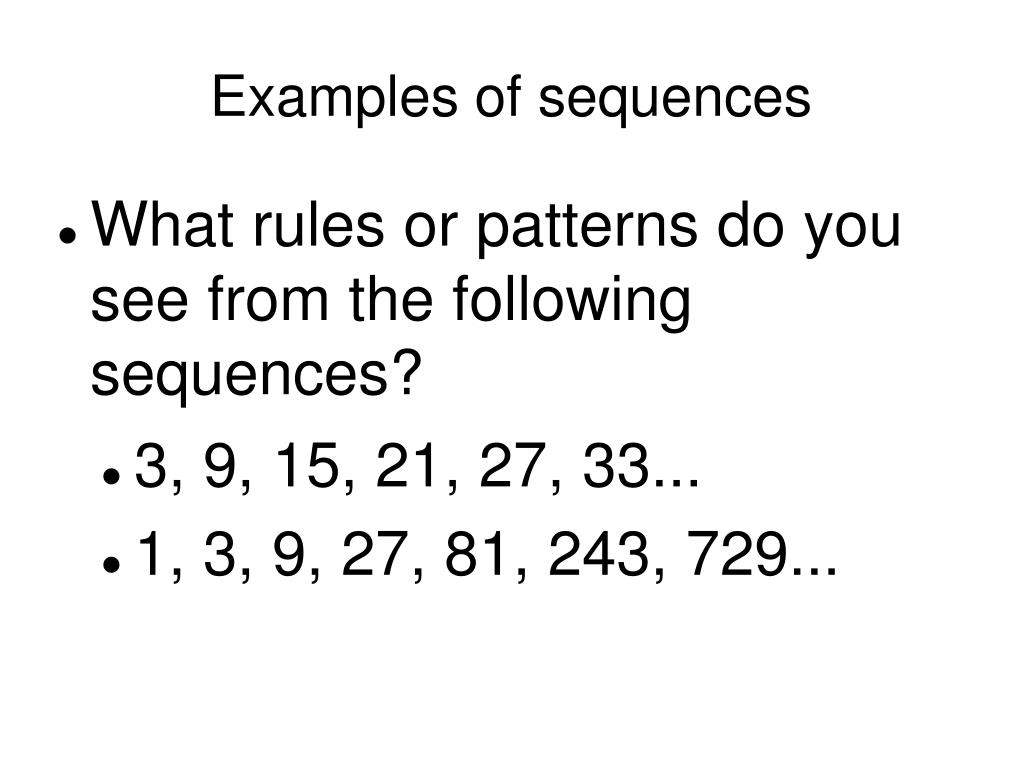

Identification of an underlying rule, mainly for linear relationships, has been addressed in research.

In some educational contexts, finding a general rule for a data set, often presented as pairs of independent and dependent values or as sequential data, is a typical task in school algebra (see Rivera, 2013). Findings about the influence of format on the range of strategies were inconclusive but analysis indicated sporadic evidence of possible influences. Building from Square and Factor Search were the most successful methods of Building a Relationship. Sequence of Differences was the most common strategy, but Building a Relationship was more likely to lead to the right formula. Qualitative analysis of eye-tracking data offers several strategies: Sequence of Differences, Building a Relationship, Known Formula, Linear Recursive and Initial Conjecture. Our aims are to identify their strategies and to explore whether and how format influences these strategies. Participants’ approaches to identifying the nth term were recorded with eye-tracking technology.
#Finding sequences how to#
In the case below, the 203 results of the original search will be reduced to 95 by using the RefSeq limit.įor another way to find RefSeqs in Nucleotide, see the " A Search Example in Five Steps" section of this guide for a description of how to add a RefSeq filter to your Nucleotide search.In this study, we identify ways in which a sample of 18 graduates with mathematics-related first degrees found the nth term for quadratic sequences from the first values of a sequence of data, presented on a computer screen in various formats: tabular, scattered data pairs and sequential. By clicking on the "RefSeq" link, only sequences from the RefSeq database will be shown in results. One way to easily find RefSeqs in Nucleotide is to use the "Source databases" limit that appear on the left of the page after launching a search. doi: 10.1093/nar/gkv1189 Searching for Reference Sequences in Nucleotide Reference sequence (RefSeq) database at NCBI: current status, taxonomic expansion, and functional annotation. Available from: and (2) O'Leary NA, Wright MW, Brister JR, et al. Bethesda (MD): National Center for Biotechnology Information (US) 2002. The Reference Sequence (RefSeq) Database. Note: The text above is adapted from two sources: (1) Pruitt K, Brown G, Tatusova T, et al. Non-protein-coding transcripts, including lncRNAs, structural RNAs, transcribed pseudogenes, and transcripts with unlikely protein-coding potential from protein-coding genesĬomputationally predicted model protein-coding transcriptsĬomputationally predicted model non-protein-coding transcripts Protein-coding transcripts (usually curated) Used predominantly for prokaryotic genomes Accession PrefixĬomplete genomic molecule, usually alternate assemblyĬomplete genomic molecule, usually reference assemblyĬontig or scaffold, clone-based or whole genome shotgun sequence dataĬontig or scaffold, primarily whole genome shotgun sequence dataĬomplete genomes and unfinished whole genome shotgun sequence data. The following table summarizes RefSeq accession numbers. In the case of the accession number NM_183124.4, "NM" indicates the molecule type (i.e., protein-coding transcript, or mRNA) and staff-curated processing "183124" is a six number identifier and the last "4" is the version number. These numbers consist of a two letter prefix followed by an underscore, a set of six or nine numbers, and a version number. Understanding how these numbers are structured can help you quickly identify both the molecule type being described and some information about how the RefSeq was derived. RefSeqs that appear in Nucleotide or in the literature have distinctive accession numbers.


The representativeness and quality of RefSeqs make them stable, trusted reference points for research. In RefSeqs, redundancies are removed, incompleteness is resolved, and errors are corrected. In addition, individual researcher-submitted sequences may be incomplete or have sequencing errors. Their importance lies in the fact that they are authoritative representations derived from researcher-submitted sequences.Īs a whole, the pool of researcher-submitted sequences represented by INSDC repositories like GenBank are redundant, with multiple sequences covering the same genomic region or transcript. Reference sequences (RefSeqs) are a substantial and important subset of sequences in the Nucleotide database.


 0 kommentar(er)
0 kommentar(er)
